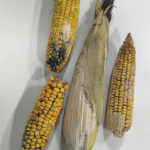Many beef producers I’ve talked to over the years have improved cow nutrition after their cows are confirmed pregnant, but there still are the diehards that don’t believe they need much nutrition. That’s too bad, because sound research has proven that poor nutrition during the early/mid-gestation months can sharply reduce newborn calf survival and long-term […] Read more













